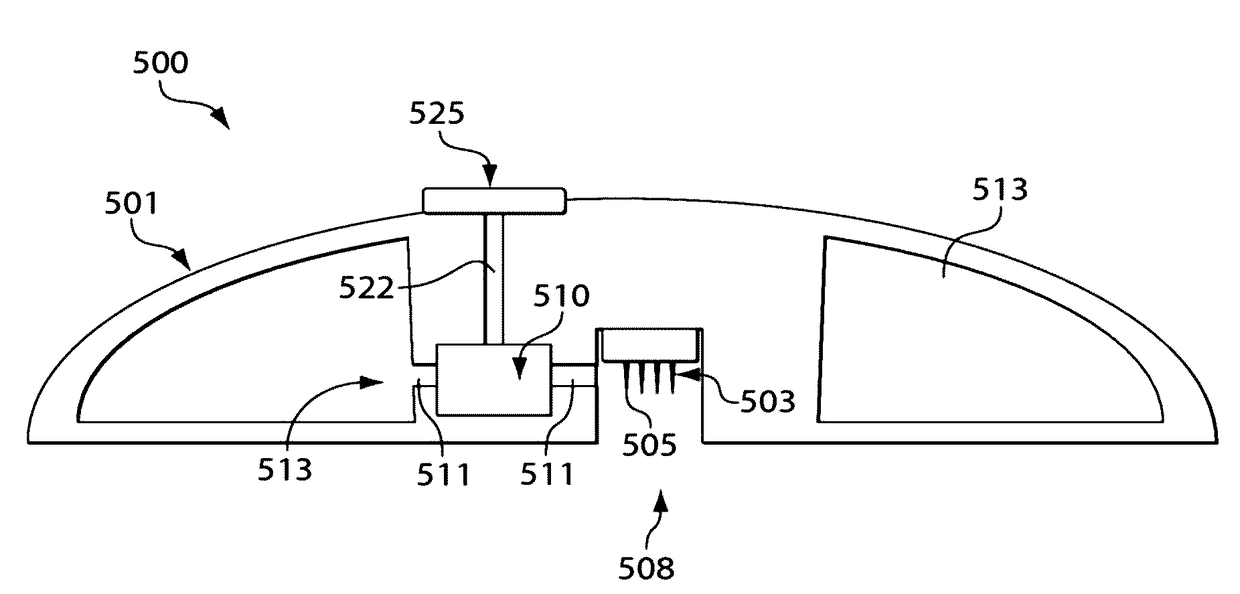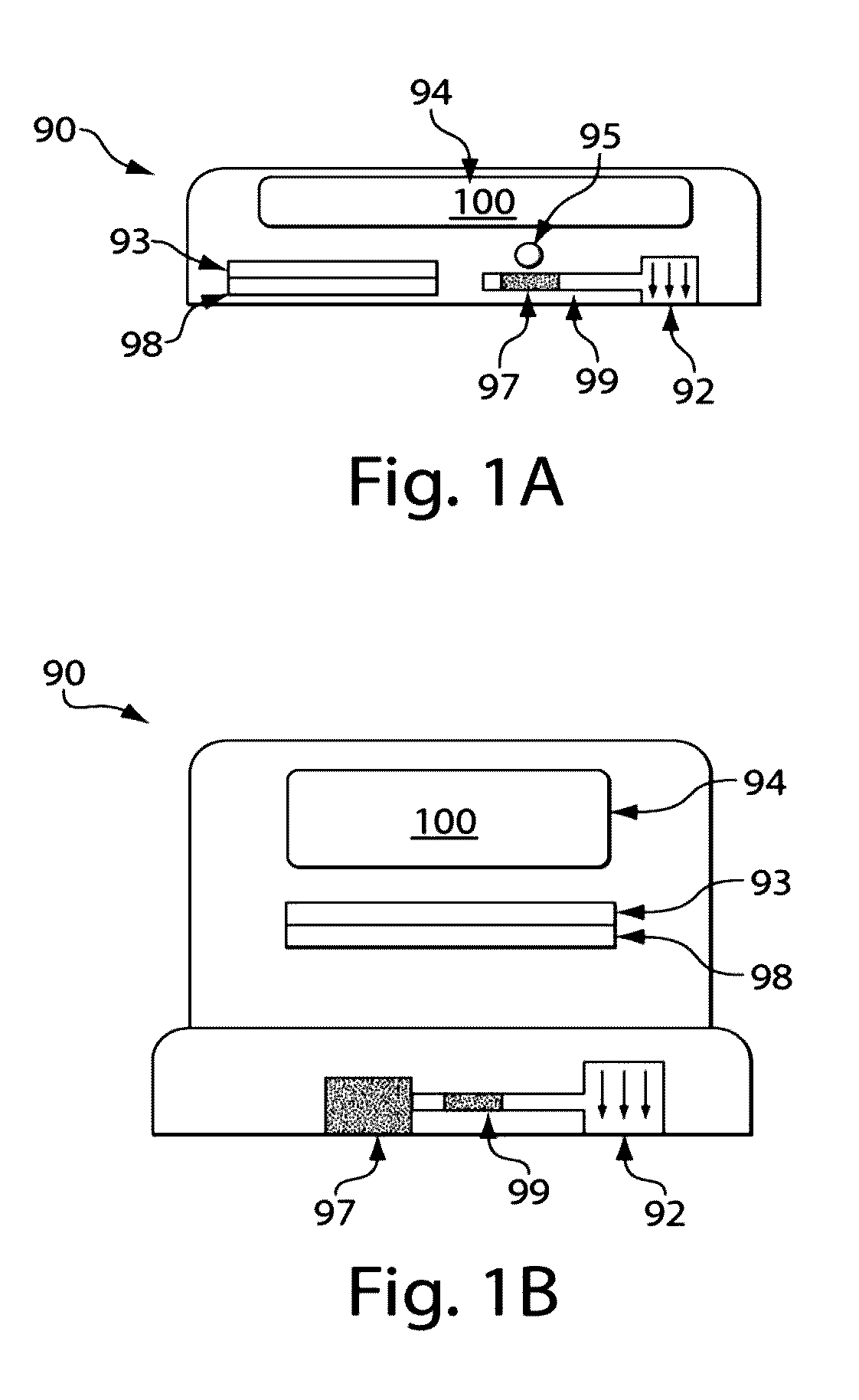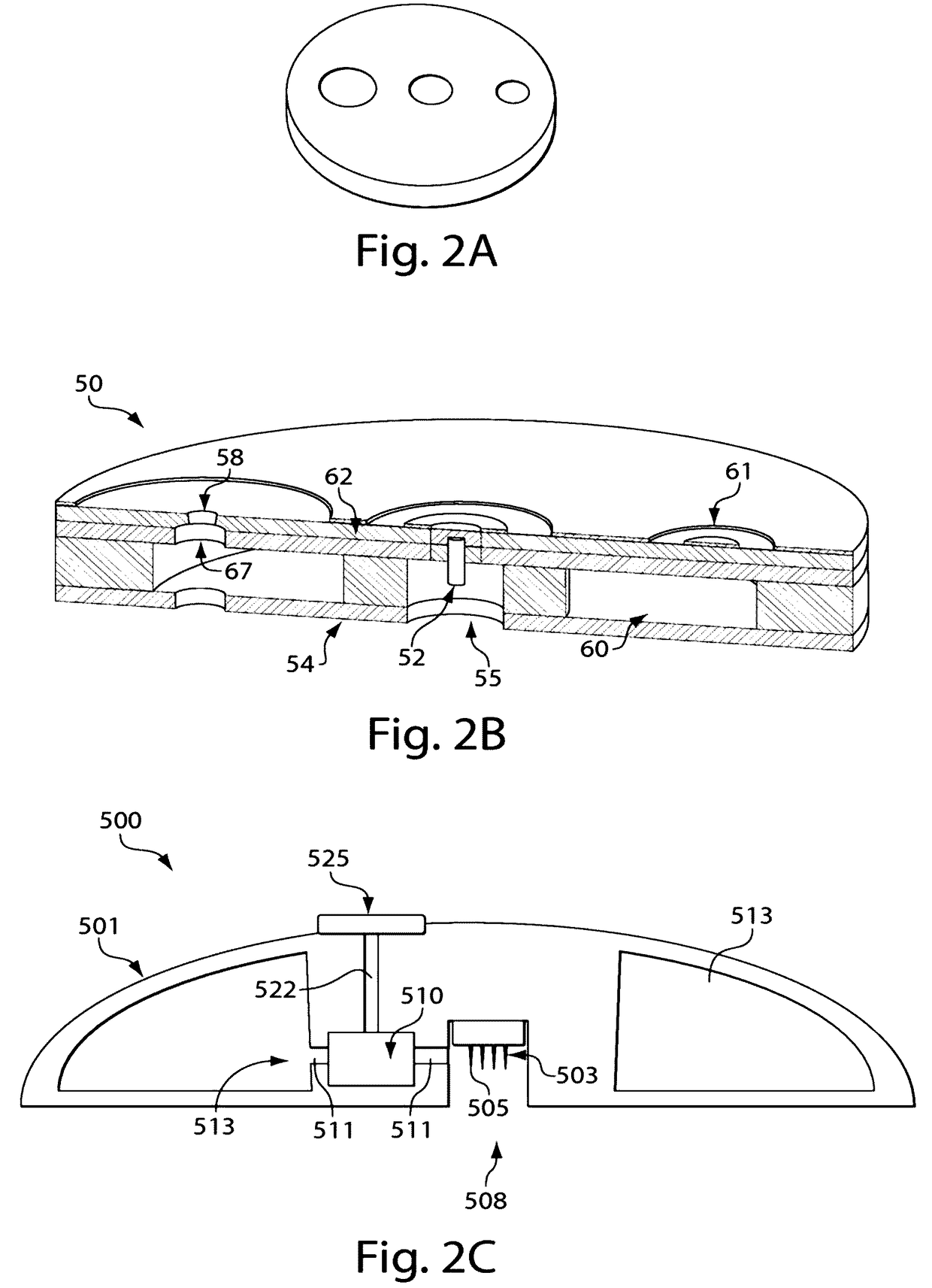Rapid delivery and/or receiving of fluids
a fluid delivery and fluid technology, applied in the field of fluid delivery and/or fluid receiving, can solve the problems of complex procedures, inability to perform, and require sophisticated training of practitioners, and achieve the effects of improving the packing density of needles, improving the density of needles, and increasing the total number of microneedles
- Summary
- Abstract
- Description
- Claims
- Application Information
AI Technical Summary
Benefits of technology
Problems solved by technology
Method used
Image
Examples
Embodiment Construction
[0042]The present invention generally relates to systems and methods for receiving a substance from a subject, e.g. received from the skin and / or from beneath the skin of the subject, and / or for delivering a substance to a subject, e.g. delivering a substance to the skin and / or to a location beneath the skin of a subject. Throughout the application, the phrase “from the skin” is used to mean from the top or outer surface of the skin, from within the skin, and / or from beneath the skin. Likewise, “to the skin” is used to mean to the top or outer surface of the skin, to within the skin, and / or to beneath the skin. The device, in some cases, may be interfaced with external equipment to determine an analyte contained within a fluid contained within or collected by the device. For example, the device may be mounted on an external holder, the device may include a port for transporting fluid out of the device, the device may include a window for interrogating a fluid contained within the de...
PUM
| Property | Measurement | Unit |
|---|---|---|
| skin-penetration area | aaaaa | aaaaa |
| angle | aaaaa | aaaaa |
| angle | aaaaa | aaaaa |
Abstract
Description
Claims
Application Information
 Login to View More
Login to View More - R&D
- Intellectual Property
- Life Sciences
- Materials
- Tech Scout
- Unparalleled Data Quality
- Higher Quality Content
- 60% Fewer Hallucinations
Browse by: Latest US Patents, China's latest patents, Technical Efficacy Thesaurus, Application Domain, Technology Topic, Popular Technical Reports.
© 2025 PatSnap. All rights reserved.Legal|Privacy policy|Modern Slavery Act Transparency Statement|Sitemap|About US| Contact US: help@patsnap.com



